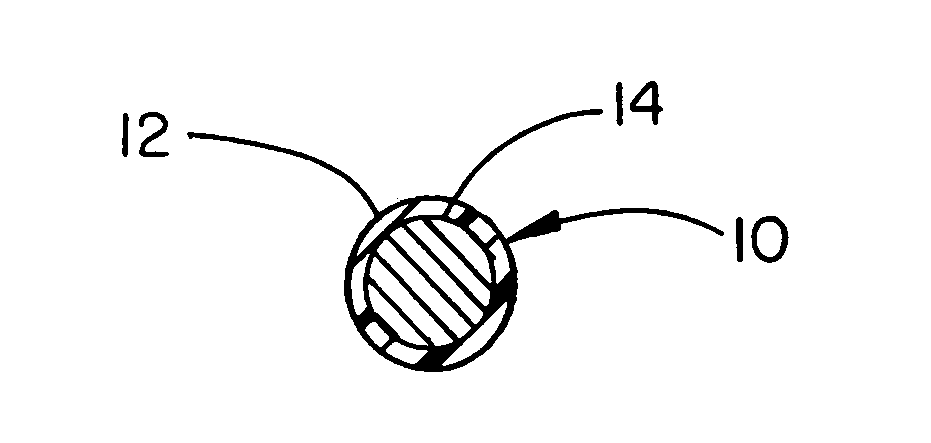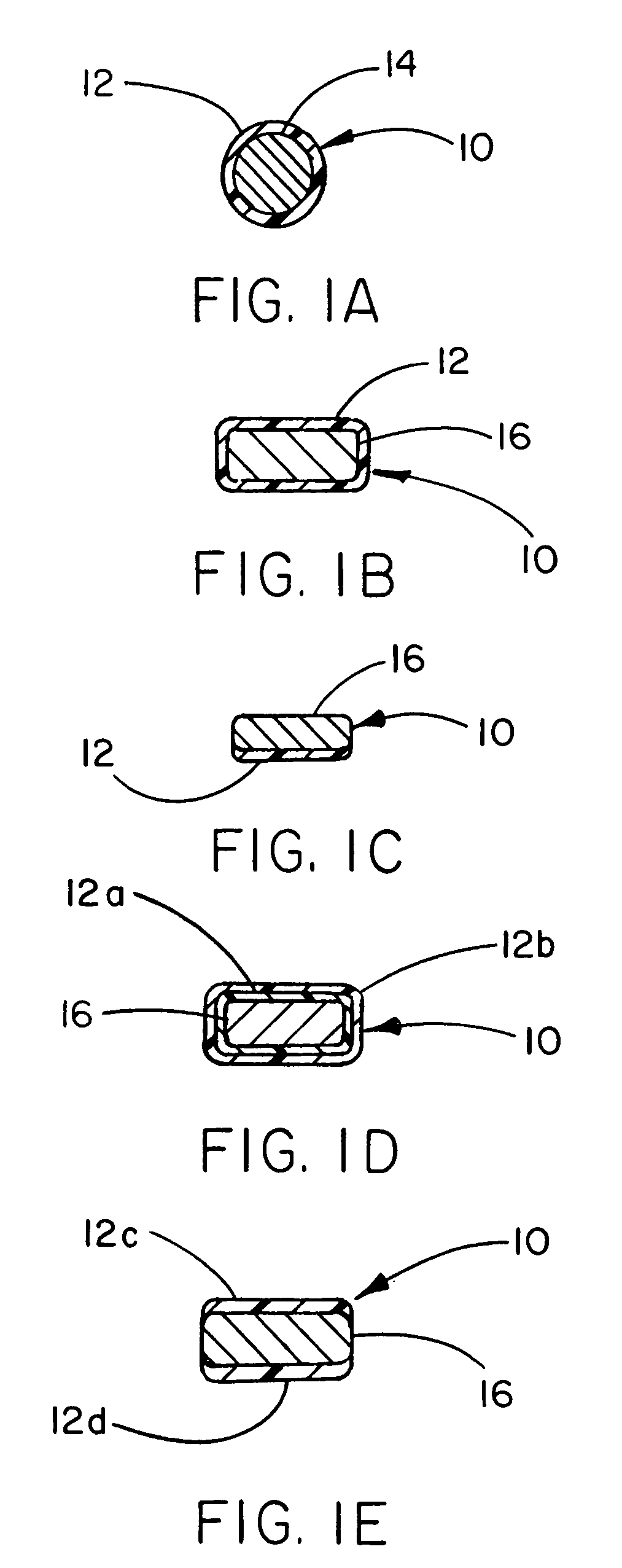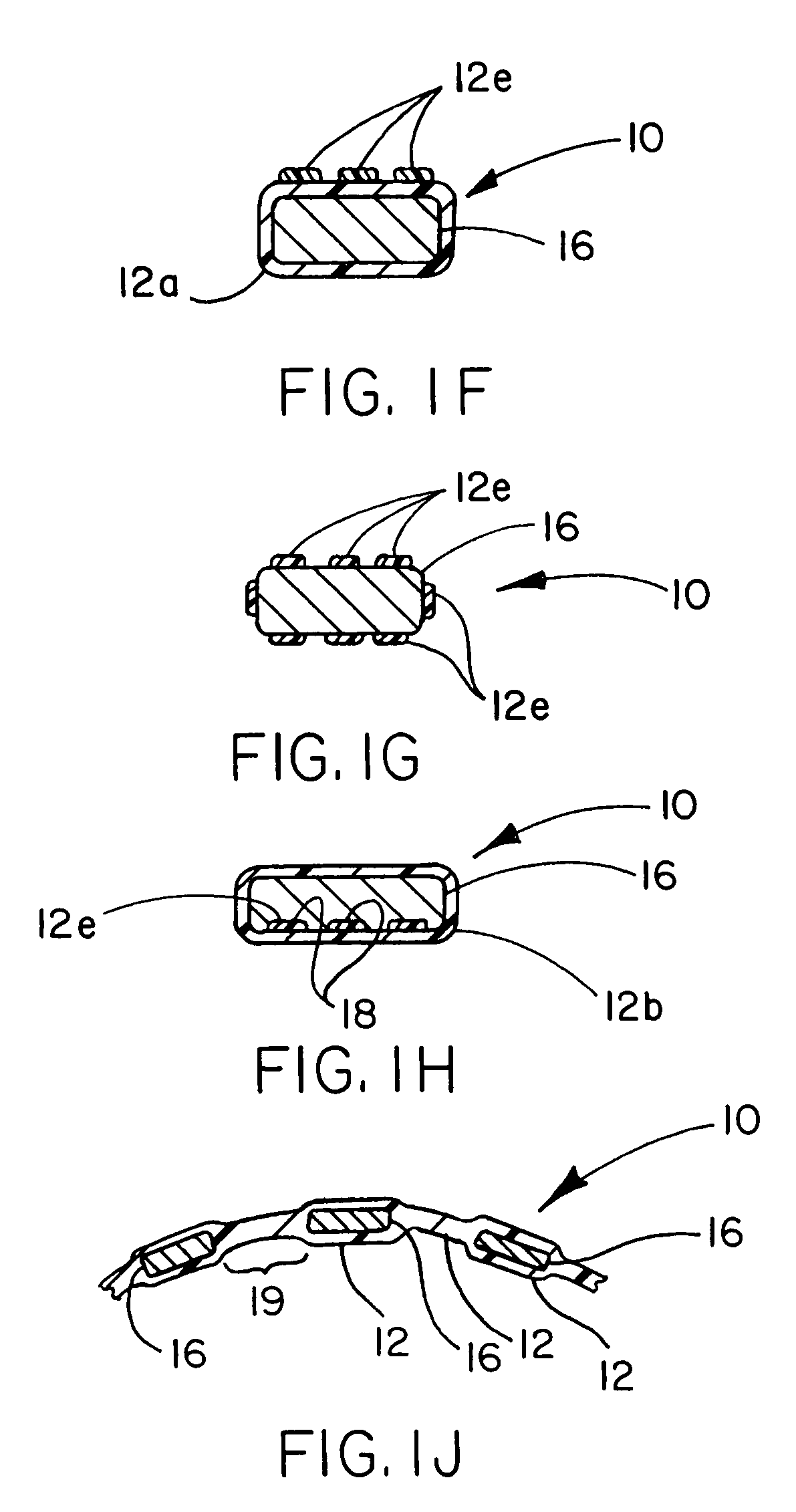Thermoplastic fluoropolymer-coated medical devices
a technology of fluoropolymer and medical devices, applied in the field of medical devices, can solve the problems of inflammatory response to injury, and increased risk of infection, and achieve the effects of reducing the risk of infection
- Summary
- Abstract
- Description
- Claims
- Application Information
AI Technical Summary
Benefits of technology
Problems solved by technology
Method used
Image
Examples
example 1
TFE / PMVE Film Evaluation of Thermal Stability of the Material
[0111]A sample of TFE / PMVE copolymer was made by emulsion polymerization resulting in average emulsion particle size of 32 nanometers (particle size estimated using light scattering methods), exhibiting the following properties: mean tensile strength of 15.2 MPa, mean 100% secant modulus of 2.37 MPa, average tensile set of 0%, and PMVE content of about 66% by weight. This copolymer sample was compression molded to produce a thin film of 0.18 mm thickness. Approximately 15 micrograms of the thin film in the form of a square sample of about 0.2 mm length per side was utilized for determination of the copolymer degradation temperature by themogravimetric analysis. The high-resolution scan covered the temperature range of 0-800° C. at heating rate of 20° C. per minute. Test results indicated that material degradation initiated at approximately 400° C., with a weight loss of less than about 0.5% at 400° C.
[0112]In an isothermal...
example 2
TFE / PMVE Film Having Pockets Loaded with Chlorhexidine Dihydrochloride
[0114]Thin films of TFE / PMVE copolymer described by Example 1, were produced via melt extrusion at temperatures exceeding 200° C. A film possessing a thickness of approximately 0.2 mm was used to construct a laminate with pockets of chlorhexidine dihydrochloride, an antimicrobial agent. A polypropylene template with 0.7 mm diameter holes arranged in a rectangle pattern was made to facilitate manufacturing of the device. The holes were evenly spaced approximately 2 mm apart, from edge to edge. This template was placed on top of one of the TFE / PMVE extruded sheets, then dusted with chlorhexidine dihydrochloride. The template was removed, leaving a dot-matrix pattern of the drug on the surface of the extruded film. A second sheet of extruded polymer was gently placed on top of the first sheet. The composite of polymer sheets and drug was wrapped in aluminum foil, placed between two metal plates, heated in an oven set...
example 3
Vascular Graft Coated with TFE / PMVE Containing Dexamethasone
[0118]The copolymer of Example 1 was obtained in a 4 wt % solution of FC-75. The working drug formulation was a mixture of 2 ml of 4 wt % polymer, 8 ml of FC-75, and 150 mg of dexamethasone (52 wt % drug based on total weight of coating solids; dexamethasone obtained from Pharmacia & UpJohn, Kalamazoo Mich.). The formulation was made by weighing dexamethasone into a test tube, adding FC-75, vortexing vigorously to complete mixing, adding the polymer, and ensuring complete mixing with additional vortexing.
[0119]A 10 cm length of Gore-Tex Vascular Graft (part number UT05070L, WL Gore & Associates, Flagstaff Ariz.) was used to demonstrate the drug release coating. The 5 mm inside diameter graft was mounted onto a mandrel for coating. The mandrel was rotated by hand as an airbrush (Badger standard set model 350 airbrush set at 220 KPa gauge air pressure, Badger Air Brush Co., Franklin Park, Ill.), held at a constant distance of...
PUM
| Property | Measurement | Unit |
|---|---|---|
| temperature | aaaaa | aaaaa |
| temperature | aaaaa | aaaaa |
| weight percent | aaaaa | aaaaa |
Abstract
Description
Claims
Application Information
 Login to View More
Login to View More - R&D
- Intellectual Property
- Life Sciences
- Materials
- Tech Scout
- Unparalleled Data Quality
- Higher Quality Content
- 60% Fewer Hallucinations
Browse by: Latest US Patents, China's latest patents, Technical Efficacy Thesaurus, Application Domain, Technology Topic, Popular Technical Reports.
© 2025 PatSnap. All rights reserved.Legal|Privacy policy|Modern Slavery Act Transparency Statement|Sitemap|About US| Contact US: help@patsnap.com



